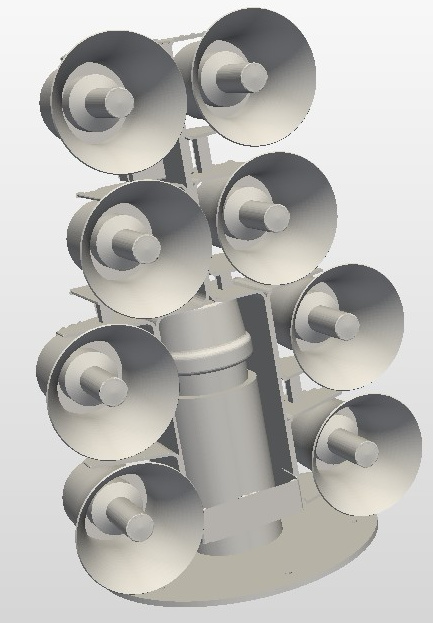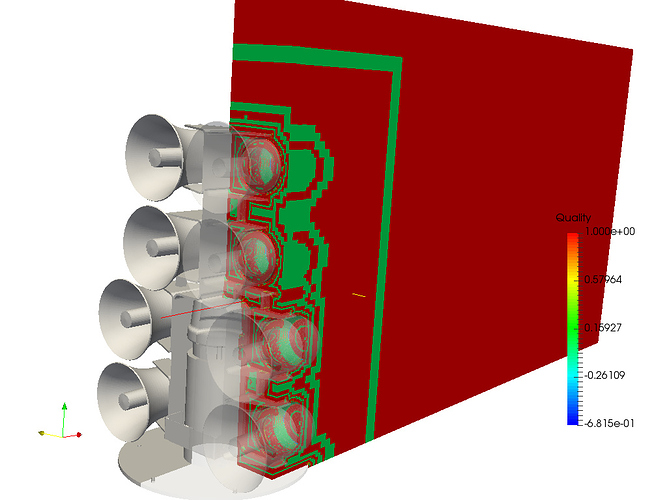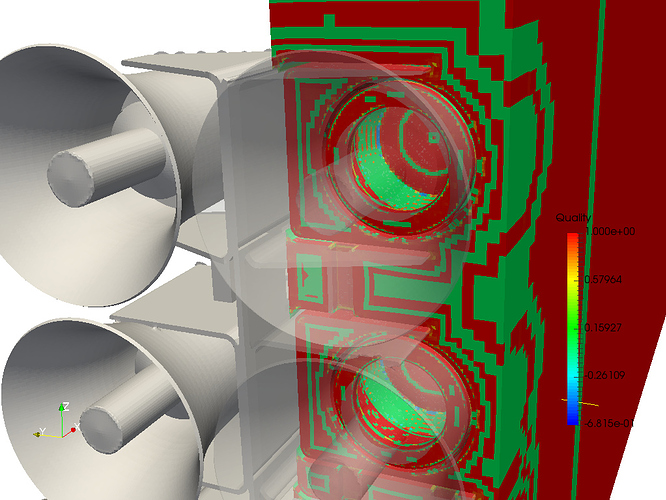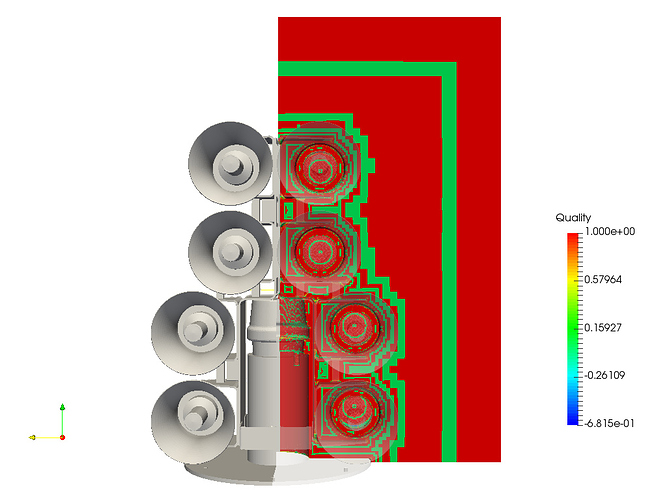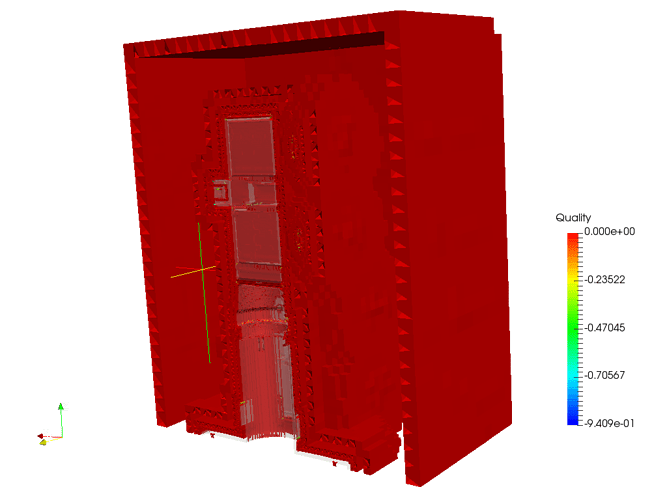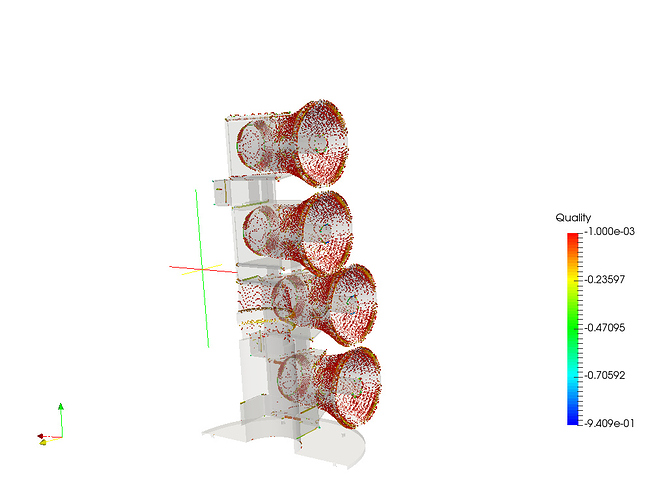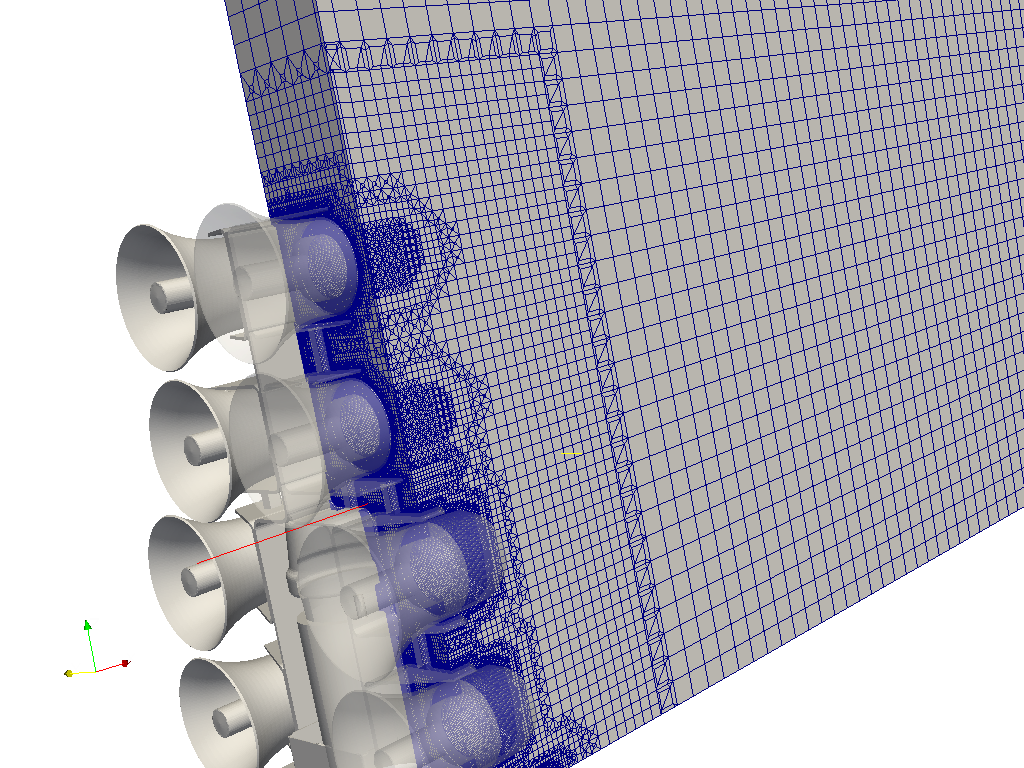Hi all!
Lately I have been working on a project where I needed to calculate the wind load over a loudspeaker system (below you can see the geometry of it).
Later, the effects of this wind load over the frame structure is to be studied. As it was my first “big” simulation I was only looking for a “pretty looking” mesh in order to run a fast simulation to get some raw numbers for a first structural simulation. I didn’t check the quality metrics of the mesh till now… And this is what I found!
Surface Element Quality Metrics
Area Max: 0.00163929, Min: 2.14471e-09, Avg: 2.9381780352086442e-05
Aspect ratio Max: 138.588, Min: 1, Avg: 1.4984095575650402
Skew Max: 0.999888, Min: 0, Avg: 0.04134366074637352
Scaled Jacobian Max: 1, Min: -0.946908, Avg: 0.9845244350433492
Condition Max: 5e+29, Min: 1, Avg: 5.770574225034172e+26
Volume Element Quality Metrics
Volume Max: 6.55869e-05, Min: 1.77457e-10, Avg: 9.90752e-07
Skew Max: 0.994358, Min: 0, Avg: 0.0824641
**Scaled Jacobian Max: 1, **Min: -0.940889, Avg: 0.951213
If you look at the average Scaled Jacobian, it looks very good! nothing to say about it. However, if you look at the minimum value you may get a shock!
Whats the meaning of a negative Scaled Jacobian? How can it affect the accuracy of the results? Do I need to remesh the case?
Below I attach some pictures so as you can get a better insight to my problem and give me some valuable feedback.
Scaled Jacobian in a clipped mesh
Scaled Jacobian in a clipped mesh (detail)
Scaled Jacobian (front)
Scaled Jacobian (negative values only)
Scaled Jacobian (values <-0.01 only)
After studying these pictures I have some questions.
- First, most of the green cells (Jacobian=0) shown in the first pictures are the cells belonging to the boundaries of refinement areas, as it can be noticed in the picture below
Is it normal that the cells that delimit refinement levels have a 0 Scaled Jacobian? Is it bad?
-
Second, what implications have working with negative values for Scaled Jacobian? Should I avoid it? I can imagine the answer…
-
If so, what should I do in order to prevent from creating negative Scaled Jacobian cells while meshing?
I am really concerned about it and I would like to get some feedback from experienced users that can help me to improve, if needed, my mesh strategy for this case.
I’m really looking forward to some interesting reply!
Best regards,
Alex Roqué

